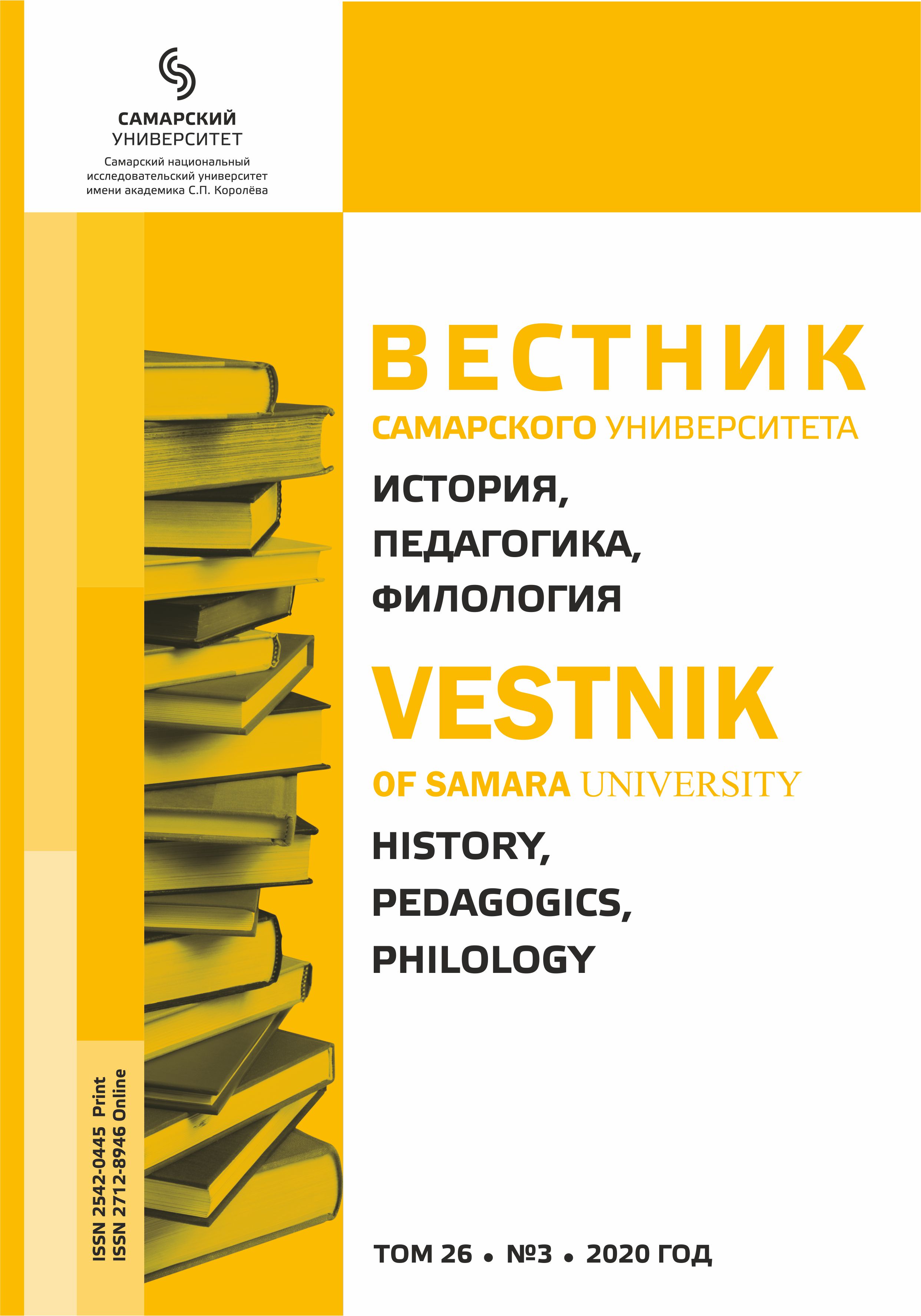Ономастическое пространство малоформатных англоязычных аннотаций учебной и научной литературы
- Авторы: Черкунова М.В.1, Пономаренко Е.В.2
-
Учреждения:
- Самарский национальный исследовательский университет имени академика С.П. Королева, г. Самара, Российская Федерация
- Московский государственный институт международных отношений (университет) МИД России, г. Москва, Российская Федерация
- Выпуск: Том 26, № 3 (2020)
- Страницы: 83-87
- Раздел: Статьи
- URL: https://journals.ssau.ru/hpp/article/view/8190
- DOI: https://doi.org/10.18287/2542-0445-2020-26-3-83-87
- ID: 8190
Цитировать
Полный текст
Аннотация
В статье авторы проводят анализ специфики лексических единиц, формирующих ономастическое пространство текстов специализированной рекламы. Исследование выполнено на материале англоязычных аннотаций, рекламирующих учебные пособия и научные труды в каталогах британских и американских издательств за 2019–2020 гг. Целью работы стало выявление семантических и прагматических параметров имен собственных с точки зрения их роли в реализации прагматической задачи текста. Аннотации учебных и научных изданий рассматриваются как специфические синкретичные образования, характеризующиеся малым объемом текста и одновременно сочетающие прагматику и языковую специфику рекламного и академического дискурсов. В частности, существенное в процентном отношении количество имен собственных в текстах аннотаций рассматривается как проявление научного дискурса, способствующее реализации воздействующей функции рекламного текста. На основе семантического анализа ономастических единиц, а также в результате количественных подсчетов определяются ядерные и периферийные семантические кластеры онимов. Далее, в ходе дискурсивного анализа, выявляется прагматический потенциал имен собственных и описывается механизм осуществления воздействующего эффекта. Так, прагматически нагруженными оказываются имена авторов, упоминания их званий и должностей, названия книжной продукции, названия университетов и их локаций. Кроме того, реализации рекламной функции способствуют названия литературных премий, названия разделов книги, а также имена собственные, конкретизирующие сведения о времени появления издания в продаже. Периферийное положение занимают разнородные по своей семантике имена собственные, обусловленные тематической направленностью конкретного издания. Высокий удельный вес ономастических единиц в малоформатных рекламных аннотациях, а также высокая степень их концентрации в узком тематическом сегменте позволяет сделать вывод, что имена собственные обладают высоким прагматическим потенциалом и являются действенным инструментом реализации прагматической задачи текста в целом за счет одновременной реализации функций информирования и воздействия.
Об авторах
М. В. Черкунова
Самарский национальный исследовательский университет имени академика С.П. Королева, г. Самара, Российская Федерация
Автор, ответственный за переписку.
Email: morenov@ssau.ru
ORCID iD: 0000-0003-4167-4530
кандидат филологических наук, доцент, доцент кафедры английской филологии, Самарский национальный исследовательский университет имени академика С.П. Королева
Е. В. Пономаренко
Московский государственный институт международных отношений (университет) МИД России, г. Москва, Российская Федерация
Email: morenov@ssau.ru
ORCID iD: 0000-0003-3725-4461
доктор филологических наук, доцент, профессор кафедры английского языка № 4, Московский государственный институт международных отношений (университет) МИД России (МГИМО МИД России)
Список литературы
- Андриенко 2017 – Андриенко А.А. Манипулятивность как имманентная характеристика современных текстов социальной рекламы (на материале английского рекламного дискурса) // Таврический научный обозреватель. 2017. № 4 (21). Ч. 1. С. 69–74. Available at: http://tavr.science/stat/2017/04/47-Andrienko.pdf; https://www.elibrary.ru/item.asp?id=29203248.
- Арнольд 2016 – Арнольд И.В. Стилистика. Современный английский язык. Москва: Флинта, 2016. 384 с. URL: http://padabum.com/d.php?id=226443.
- Бородулина, Макеева, Гуляева 2017 – Бородулина Н.Ю., Макеева М.Н., Гуляева Е.А. Лингвистические средства в обеспечении продвижения вирусной рекламы // Филологические науки. Вопросы теории и практики. 2017. № 9 (75): в 2 ч. Ч. 1. С. 87–89. Available at: https://www.gramota.net/materials/2/2017/9-1/23.html; https://www.elibrary.ru/item.asp?id=29899323.
- Гринштейн 2002 – Гринштейн А.С. Коннотативные значения имен собственных и лингвокультурологические аспекты перевода // Коммуникация в диалоге культур: межвуз. сб. науч. тр. Самара: Изд-во «Самарский университет», 2002. С. 89–97.
- Мамедов 2015 – Мамедов А.Н. Коммуникативно-прагматические аспекты текстов печатной немецкоязычной рекламы. Москва: Московский педагогический государственный университет, 2015. 108 с. URL: https://www.elibrary.ru/item.asp?id=43046619.
- Мельничук, Климова 2019 – Мельничук М.В., Климова И.И. Манипулятивные средства языка в рекламном дискурсе финансовых компаний // Гуманитарные науки. Вестник финансового университета. 2019. Т. 9, № 6 (42). С. 111–115. doi: 10.26794/2226-7867-2019-9-6-111-115.
- Свекла 2015 – Свекла Т.П. Слоган как основной компонент рекламного сообщения и его влияние на массовое сознание // Коммуникативные исследования. 2015. № 3 (5). С. 87–96. URL: https://www.elibrary.ru/item.asp?id=25862741.
- Тхориков, Винник 2020 – Тхориков Б.А., Винник А.Е. Изучение синтаксических особенностей заголовков рекламных текстов // Маркетинг в России и за рубежом. 2020. С. 43–48. URL: https://www.elibrary.ru/item.asp?id=42456168.
- Шутова 2019 – Шутова Н.М. Стилистика рекламного текста как переводческая задача (на материале автомобильной рекламы) // Вестник Удмуртского университета. Серия «История и Филология». 2019. Т. 29, Вып. 3. С. 461–470. doi: 10.35634/2412-9534-2019-29-3-461-470.
Дополнительные файлы













